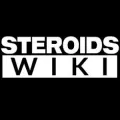Steroids and Muscle Memory


Copied from another board an excellent read by Peter Bond
Muscle memory refers to growing muscle more efficiently/faster after a period of detraining/atrophy than before. So if you’ve had bigger muscles in the past, it will help you to grow them big again at a later point in time. The concept of muscle memory leans for a good part on something called myonuclear permanence. The ‘myo’ in ‘myonuclear’ refers to ‘muscle’ and the ‘nuclear’ doesn’t refer to nuclear reactors, but to the word ‘nucleus’: an organelle of the cell. Before we further explore the concept of muscle memory, and how anabolic steroids tie into this, let’s first cover some background on muscle nuclei or myonuclei.
Some background information on muscle nuclei/myonuclei
Muscles consist of a whole bunch of muscle fibers. Each muscle fiber, or muscle cell, contains multiple nuclei—the organelle of a cell that contains DNA and is the location where the process of gene transcription takes place. Most other human cell types contain only one nucleus, or in some cases even no nucleus at all (red blood cells). To give you an idea about how many nuclei we’re talking about: rat muscle fibers contain about 44 to 116 nuclei per millimeter fiber length, with type 1 muscle fibers containing more nuclei per millimeter than type 2 muscle fibers [1]. The number appears lower in humans, with one researcher reporting about 30 nuclei per millimeter fiber length in brachial biceps muscle [2]. As such, muscle fibers can contain up to thousands of myonuclei as they can span several centimeters in length.
Because the cell nuclei of muscle fibers are unable to divide (i.e. they’re terminally differentiated), muscle fibers rely on surrounding satellite cells for the addition of new nuclei. Essentially, satellite cells are muscle fiber stem cells that can be found squeezed between the sarcolemma (the cell membrane of a muscle fiber) and the basal lamina (a layer of extracellular matrix that’s wrapped around the sarcolemma). They were first discovered and described by Alexander Mauro in scientific literature in 1961 [3]. Using an electron microscope, he saw cells ‘wedged’ between the sarcolemma of frog muscle fibers and the basal lamina. He described them to have a paucity of cytoplasm, with the nucleus making up almost the entire satellite cell volume. He continued to speculate about the origin and the role of satellite cells, briefly touching upon the idea that they might be involved in responding to trauma inflicted on a muscle fiber. Which, indeed, they are [4].
The myonuclear domain hypothesis and myonuclear permanence
The discovery of satellite cells and their role in muscle regeneration beg the question to what extent satellite cells are involved in hypertrophy. A hypothesis named the myonuclear domain hypothesis hooked into this. It posits that a myonucleus controls a limited amount of cytoplasm, and thus for muscle growth to take place, myonuclei need to be added to the muscle fiber to support this. Three key observations supported this hypothesis, namely:
γ-radiation exposure makes satellite cells unable to divide and strongly inhibits overload hypertrophy in animal models, while keeping cell metabolism or protein synthesis intact [5].
Products (organelle, membrane and structural proteins) derived from a nucleus remain localized to its vicinity [6].
The cytoplasm/myonucleus ratio remains fairly constant [7].
This would imply that myonuclear number would increase with growth of a muscle fiber (hypertrophy), while it would decrease with a loss of size of a muscle fiber (atrophy). However, various animal studies suggest that myonuclei aren’t lost during atrophy [8]. As such arose the paradigm of myonuclear permanence: once myonuclei are gained with hypertrophy, they aren’t lost again with detraining. This could potentially allow muscle fib
Created
 2 years ago
2 years ago
-
Last Reply
 2 years ago
2 years ago
- 1
replies
- 840
views
- 1
users
- 0
likes








